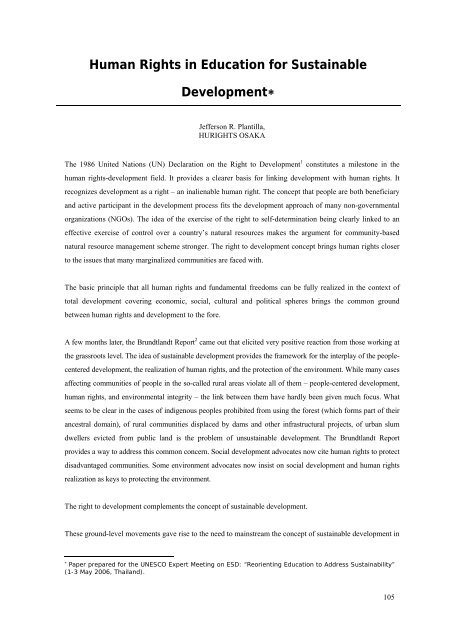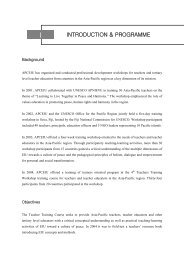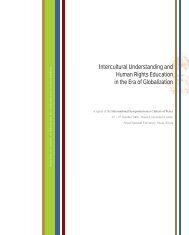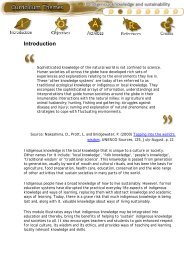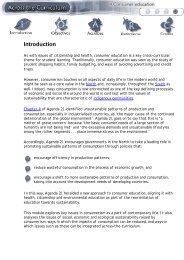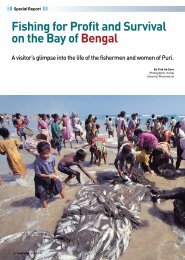REPORT OF UNESCO EXPERT MEETING ON - APCEIU
REPORT OF UNESCO EXPERT MEETING ON - APCEIU
REPORT OF UNESCO EXPERT MEETING ON - APCEIU
You also want an ePaper? Increase the reach of your titles
YUMPU automatically turns print PDFs into web optimized ePapers that Google loves.
Human Rights in Education for Sustainable<br />
Development∗<br />
Jefferson R. Plantilla,<br />
HURIGHTS OSAKA<br />
The 1986 United Nations (UN) Declaration on the Right to Development 1 constitutes a milestone in the<br />
human rights-development field. It provides a clearer basis for linking development with human rights. It<br />
recognizes development as a right – an inalienable human right. The concept that people are both beneficiary<br />
and active participant in the development process fits the development approach of many non-governmental<br />
organizations (NGOs). The idea of the exercise of the right to self-determination being clearly linked to an<br />
effective exercise of control over a country’s natural resources makes the argument for community-based<br />
natural resource management scheme stronger. The right to development concept brings human rights closer<br />
to the issues that many marginalized communities are faced with.<br />
The basic principle that all human rights and fundamental freedoms can be fully realized in the context of<br />
total development covering economic, social, cultural and political spheres brings the common ground<br />
between human rights and development to the fore.<br />
A few months later, the Brundtlandt Report 2 came out that elicited very positive reaction from those working at<br />
the grassroots level. The idea of sustainable development provides the framework for the interplay of the peoplecentered<br />
development, the realization of human rights, and the protection of the environment. While many cases<br />
affecting communities of people in the so-called rural areas violate all of them – people-centered development,<br />
human rights, and environmental integrity – the link between them have hardly been given much focus. What<br />
seems to be clear in the cases of indigenous peoples prohibited from using the forest (which forms part of their<br />
ancestral domain), of rural communities displaced by dams and other infrastructural projects, of urban slum<br />
dwellers evicted from public land is the problem of unsustainable development. The Brundtlandt Report<br />
provides a way to address this common concern. Social development advocates now cite human rights to protect<br />
disadvantaged communities. Some environment advocates now insist on social development and human rights<br />
realization as keys to protecting the environment.<br />
The right to development complements the concept of sustainable development.<br />
These ground-level movements gave rise to the need to mainstream the concept of sustainable development in<br />
∗ Paper prepared for the <strong>UNESCO</strong> Expert Meeting on ESD: “Reorienting Education to Address Sustainability”<br />
(1-3 May 2006, Thailand).<br />
105


